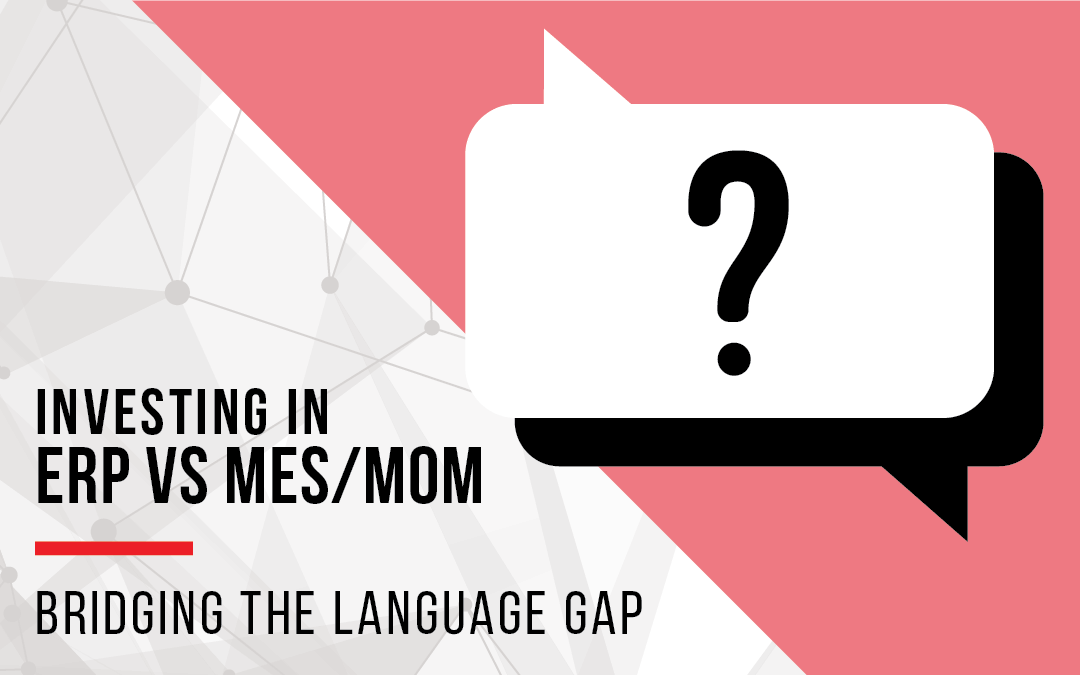At Brock Solutions, we have a lot of experience working with manufacturers from different industries, of various sizes, and with different philosophies. Every plant floor we visit is different from the last. While they certainly present unique problems and solutions we have also been able to identify several patterns that reoccur across all industrial manufacturing. A common scenario we see in our first meetings with clients is that they are either considering, implementing, or completing a large scale (and expensive) roll-out of a top-tier enterprise resource planning (ERP) package. It’s also very likely that their manufacturing operations are dependent upon on a combination of homegrown applications, legacy systems, and several dozen Excel spreadsheets. The unfortunate trend is clear; over 90% of Fortune 500 companies are using commercial off-the-shelf (COTS) ERP packages, but only a fraction have a COTS manufacturing operations management (MOM) system to support it.
As system integrators we have to ask: why?
In this Investing in ERP vs MES/MOM series we will be examining the factors that contribute to the disparity in ERP and manufacturing execution systems (MES)/MOM adoption and why most MES/MOM initiatives never get off the ground. The first issue we’ll be covering is that of Language Gap due to a lack of standardized terminology in the MES/MOM space and how a system integrator like Brock Solutions can help you understand which system would be best for your operation.
In the ERP world, terminology and data models are very similar regardless of industry. Standardization of accounting and financial reporting through GAAP and various regulatory boards has provided a common language. Cost of Goods Sold, Accounts Receivable, Inventory Value- they all mean the same thing whether you manufacture cars or cosmetics. This consistency facilitates discussions around ERP, what it can do, and where it will fit into your business. Leadership executives are all familiar with this vernacular, and it facilitates the approval process. In the MES/MOM world however, no such consistency exists. While it is true that various groups have released standards like ISA-88/95 and B2MML which have brought unification to the COTS MOM platforms, no real unification has reached the shop floors of producers around the world. For example, a “lot” of epoxy resin may not be treated the same as a “lot” of circuit boards. The “recipe” used for furnace annealing is going to be fundamentally different from a “recipe” used for bread production.
This language gap presents fundamental challenges to getting started with MES/MOM initiatives. We often work with manufacturers who have trouble deciding if MES/MOM technologies are the right solutions for their problems. They understand their operational challenges in their own language, but struggle to understand how that translates to the language of MES/MOM. To overcome this common roadblock, it’s necessary to understand how the needs of the business are met by the capabilities of the software, and this is where an MES/MOM integrator is invaluable. With a base of experience across many different industries and many different MES/MOM platforms, the integrator can distill the client’s business requirements and correlate them with functionality of an MES/MOM platform that would work best for them. Providing this expertise and clarity enables the discussions to move forward with a common understanding across all levels.
Once the initiative moves to implementation, another a more technical language gap presents itself. This is the gap between requirements in the manufacturing domain of the client, and requirements in the technical domain of the MES/MOM product. Typically, this will show up in one of two ways:
- An organization captures their requirements in their language, but then struggles to understand how to translate them into the MES/MOM language and the project stalls as they try to build their solution.
- A MES/MOM vendor captures client requirements in the language of their product, and the project stalls when the client sees little resemblance to their business.
Being able to bridge the language gap between business & manufacturing and MES/MOM is imperative to successfully executing initiatives in this space. In leveraging an experienced integrator that is fluent in both languages you can help prevent delays and realize the benefits of these technologies sooner and more effectively. If you find yourself in an ERP vs MES/MOM language gap scenario, or want to know more, please reach out to Brock Solutions today.

